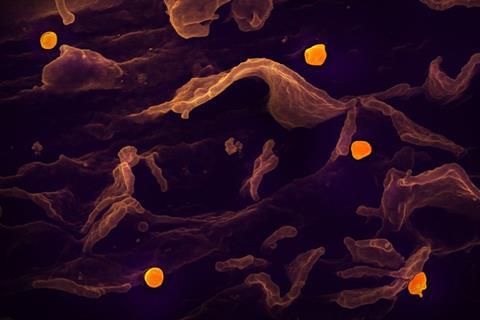Nipah virus (NiV), a zoonotic paramyxovirus with significant human health implications, has garnered considerable attention due to its high fatality rates and potential for human-to-human transmission, posing a global public health threat. Emerging in South and Southeast Asia, NiV is known for its recurrent outbreaks, with a particular focus on its genetic lineages, NiV-MY and NiV-BD, which differ in pathogenicity and transmissibility.

The virus, initially isolated in Malaysia in 1998, has since caused outbreaks linked to contact with infected animals, particularly fruit bats of the Pteropus genus, or consumption of contaminated food products like raw date palm sap.
According to a new review, which appears in Frontiers in Medicine, epidemiological insights reveal that NiV has demonstrated its ability to infect a wide range of hosts, from natural reservoirs like bats to domestic animals such as pigs, which act as intermediate hosts, facilitating transmission to humans. Human infections have been reported across Malaysia, Singapore, Bangladesh, India, and the Philippines, with the virus exhibiting a propensity for causing severe disease and death. The pathogenesis of NiV involves initial infection in the respiratory tract, followed by systemic spread, leading to vasculitis and organ infection. The virus’s ability to evade the host’s immune response and cause endothelial cell damage contributes to its high pathogenicity.
Range of symptoms
Clinically, NiV presents with a range of symptoms, from nonspecific flu-like illness to severe neurological complications, with a significant risk of relapse and late-onset encephalitis in survivors. Currently, there is no specific antiviral treatment for NiV infection, and management relies on supportive care.
READ MORE: First-in-human vaccine trial for deadly Nipah virus launched
READ MORE: Fruit-only diet improves bats’ immune response to viruses
Ribavirin has been used empirically, but its efficacy remains uncertain due to conflicting results from in vitro studies and animal models. The development of vaccines against NiV is a priority, with various approaches under investigation, including virus-like particle-based and mRNA-based vaccines. However, no vaccine is yet approved for human use.
Prevention strategies for NiV focus on reducing exposure to the virus through public health measures such as surveillance, education, and changes in agricultural practices. These include preventing access of bats to date palm sap and implementing strict hygiene measures in pig farming to curb virus transmission. The review underscores the need for a multidisciplinary approach to address the NiV threat, including the development of effective therapeutics and vaccines, and the implementation of robust infection control measures to prevent outbreaks and protect public health.







No comments yet